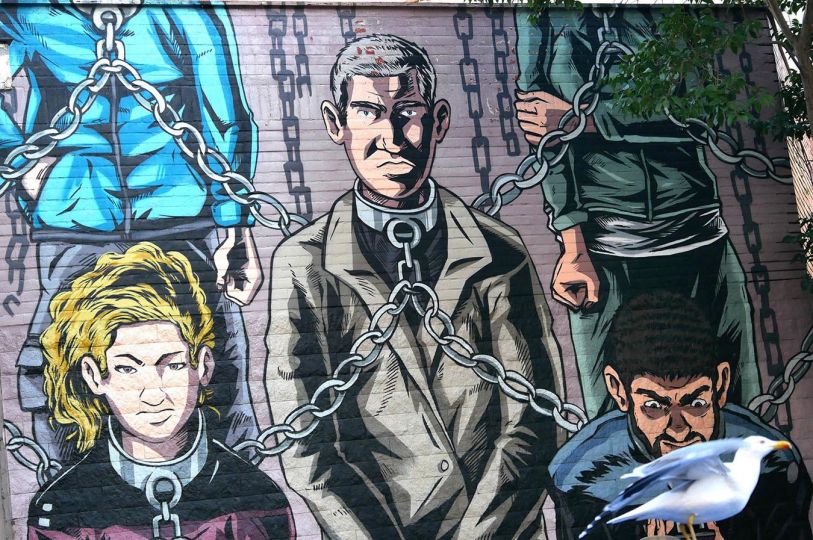How have images gradually interfered with the domestic space in France? How did we display it on the walls of our living rooms? Answers to the exhibition presented at the moment at the Musée de l’image in Épinal.
These are scraggy images that remain on a wooden wall and some of them date back to the 17th century. Exceptional pieces that were discovered in 1976 by chance in an abandoned house in Bessans in Haute-Maurienne and which were immediately preserved and restored by ethnologists from Chambéry. They show wonderfully how the average person of the time could be brought to collect images and display them on the walls of his house. This is the challenge of this exhibition that immerses us in this social practice of collecting and exposing images inside homes, a practice that is difficult to put into history, but which we can situate, thanks to traces that were left around from the seventeenth century.
Christ on the cross
Doors, interior of a wardrobe, walls of a room … any surface is good to accommodate images. First, where do they come from? At the time, there is a real trade in images. Not only illustrators – first in the four corners of France, then in the East especially (and obviously Epinal) – make illustrations likely of interest for everyone, but then peddlers sold them all over the country. . This is reflected in the illustrations of peddlers exhibited here and there. This trade is also flourishing because it manages to create images with high symbolic value for individuals. Most, indeed, are then religious images. From the 17th to the 19th century, they are predominant in the interiors of people. A picture of a virgin with the child, a Christ on the cross, a Saint.
Napoleon I
These images have a particular function: they aim to protect the occupant of the house who places them on its walls. They are also a testimony to the religious fervor of the time and the need to declare one’s faith in society. But they also have a decorative function. With their shimmering colors, such as strong pink, they decorate perfectly the inside of a house. We can see them on many paintings representing the inside of a cottage with its inhabitants as on the canvas “Interior Breton” by Jean-Marie Villard in 1870. Some also take a shine to Napoleon I, which can be seen in some illustrations. The strong colors of these images will even inspire the painters of Pont-Aven, especially Émile Bernard and Paul Gauguin who seek new motifs, especially through Japanese prints, but also, therefore, popular images.
L’abbé Pierre
If these rather old images are the beating heart of the exhibition, the museum has nevertheless made a nod to our contemporary era with a series of photographs by Sabine Weiss. The photographer known to be in the “humanistic” current has fixed the image of individuals at home and we can see what kind of images they display on their walls. This teenager who places sports posters, this man who has made a small postcard decor in front of his office or the Abbé Pierre who places on the walls of his room pious images. A revelation of the particular atmosphere that permeates each individual universe and that also owes to the arrangement of images on the walls.
Jean-Baptiste Gauvin
Images sur les murs / Pictures on the walls
Until September 29
42 Quai de Dogneville
88000 Epinal
http://www.museedelimage.fr/
















